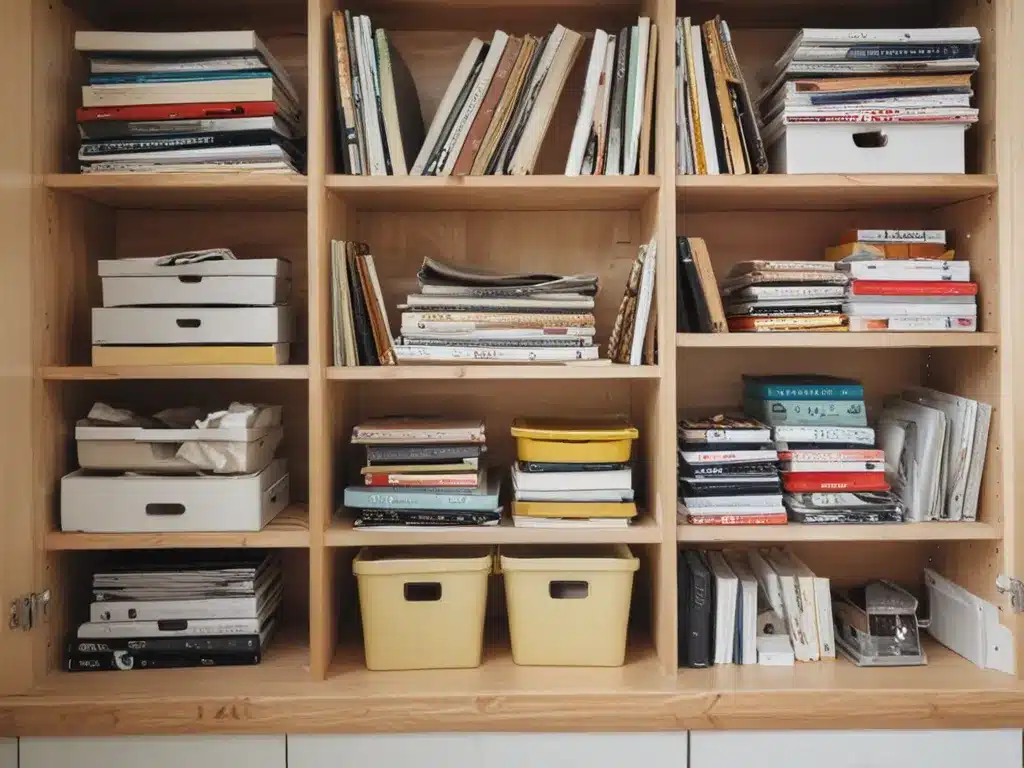Introduction
Getting on top of clutter in your home can feel like an overwhelming task. However, focusing your efforts on a few key areas that tend to collect clutter can have an outsized impact on making your home feel cleaner and more organized. In this article, I will share the most common hidden clutter hotspots and provide tips for tackling each area.
Entryways and Mudrooms
The entryway to your home tends to collect a lot of clutter from coats, shoes, bags, mail, keys and more. This area is often neglected and can quickly start to feel chaotic.
Tips for tackling entryway clutter:
-
Install hooks, shelves, baskets and storage bins to corral items. Label each so items have a designated spot.
-
Regularly purge coats and shoes. Donate or sell any you have not worn in over a year.
-
Deal with mail and keys as soon as you walk in. Don’t let it pile up.
-
Have a donation bin for any items that come into the house and don’t have a home. Deal with this bin weekly.
Kitchen Counters
Kitchen counters easily become a drop zone for mail, bags, appliances and other random items. This causes them to look perpetually messy.
Tips for clearing kitchen counter clutter:
-
Categorize items and find a home for each category – mail, office supplies, appliances, etc.
-
Install organizing systems like racks, baskets and trays to contain items.
-
Never go to bed with items left on the kitchen counters. Address clutter daily.
-
Meal prep to avoid food packaging clutter. Use reusable containers.
-
Minimize kitchen appliances and store the ones you use least in a pantry or cupboard.
Junk Drawers
That kitchen drawer stuffed with rubber bands, takeout menus, old batteries and random gadgets you never use? Yes, that one. Junk drawers easily become a tangled mess.
Strategies for organizing junk drawers:
-
Empty the drawer completely. Toss anything expired or broken.
-
Categorize the contents and find or purchase affordable organizing trays and dividers. Label them.
-
Be ruthless about what you put back in. If you haven’t used it in a year, toss it.
-
Limit yourself to one junk drawer per room. Avoid spreading the clutter.
-
Regularly purge and tidy the drawer – aim for once a month.
Bedrooms Closets
Bedroom closets often turn into black holes of clutter as clothes pile up and items like shoes and bags are tossed in without homes. Dark cluttered closets contribute to morning chaos.
Tips for organizing bedroom closets:
-
Thoroughly clean out the closet. Donate or sell anything you haven’t worn in over a year.
-
Categorize what remains – pants, shirts, shoes, accessories, seasonal items, etc. Buy organizers appropriate for each category.
-
Arrange clothes by category and install organizers to contain each group. Most worn items should be most accessible.
-
Utilize vertical space with shelves, racks and hangers for bags, shoes and accessories.
-
Add lighting so you can see everything. Proper lighting prevents “out of sight, out of mind” clutter zones.
Under Kitchen and Bathroom Sinks
The dark spaces under sinks easily become cluttered with cleaning supplies, toiletries and beauty products. This clutter then gets dusty and forgotten.
Strategies for Organizing Under Sinks:
-
Take everything out from under the sink. Toss expired items.
-
Categorize the contents – cleaning supplies, toiletries, first aid items, etc.
-
Install slide out trays or drawer organizers to hold each category. Label the organizers.
-
Store only bathroom or cleaning items under bathroom and kitchen sinks respectively. Find other homes for miscellaneous items.
-
Take inventory of what you have before buying more. Repurpose containers to store supplies you already have on hand.
Garages and Basements
As the main storage areas of a home, garages and basements easily become disorganized dumping grounds for overflow items. This makes finding things you need a headache.
Tips for tackling garage and basement clutter:
-
Thoroughly clean out the space. Toss or donate anything you haven’t used in years.
-
Categorize remaining items – sports gear, tools, seasonal items, camping equipment, etc.
-
Buy shelving units and storage bins to organize each category. Label everything.
-
Arrange items by frequency of use. Most used items should be most accessible.
-
Park vehicles inside to maximize floor space for storage. Use wall space for shelves and hooks too.
-
Maintain organization by putting items back immediately after using.
Automobiles
Your car can quickly become a cluttered mess of receipts, napkins, water bottles, kid’s toys and so much more. This chaos makes driving unpleasant and embarrassing if you ever need to give someone a ride.
Strategies for cleaning out your car:
-
Remove everything from the car. Toss trash and anything you won’t actually use.
-
Vacuum and clean the interior thoroughly. A clean slate helps maintain order moving forward.
-
Install organizers like a rear seat organizer, side door pockets, and front seat tray to contain necessary items.
-
Restock your car with only essentials – registration and insurance, charging cords, emergency kit, etc. Limit extras.
-
Never leave items loosely in the backseat. Everything should have a designated organizer or storage bin.
-
Do a quick tidy whenever you fill up on gas. It takes just a couple minutes to maintain order.
Conclusion
Clutter easily accumulates in the busiest areas of your home. By focusing your organizing efforts on key hotspots like entryways, kitchens, closets and more, you can make the most impact with minimal time and effort. Use the strategies provided to tackle each area and prevent clutter from taking over important spaces in your home and life. Maintaining organization is much easier when everything has a designated home.







